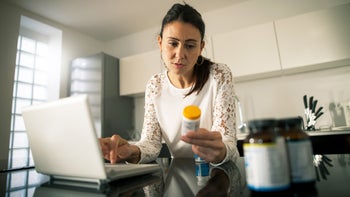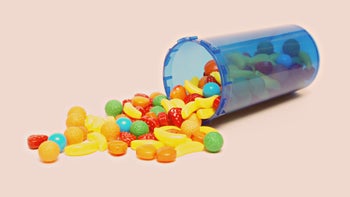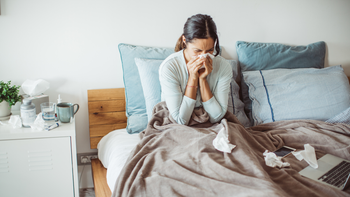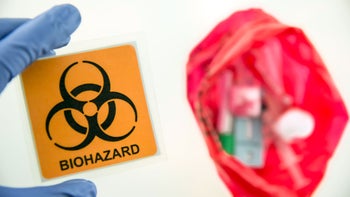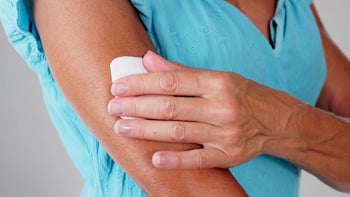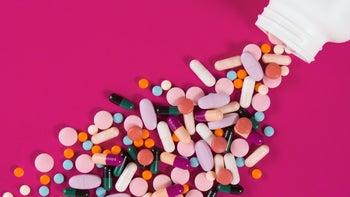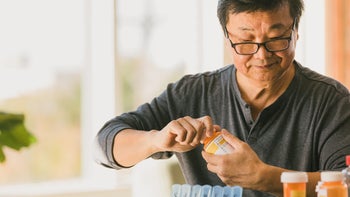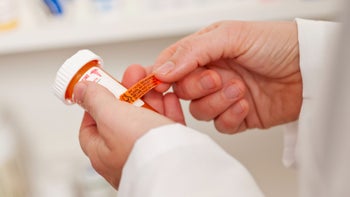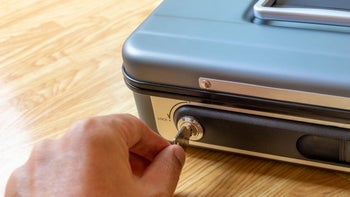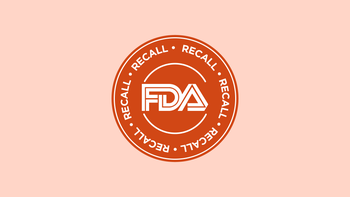
Alcohol and Antibiotics: Is Mixing Them Really That Dangerous?
Key takeaways:
There are certain types of antibiotics that you should not take with alcohol
Most antibiotics come with a risk of nausea, vomiting, and diarrhea. Alcohol can amplify these effects.
In addition to interacting with many antibiotics, drinking alcohol can make it harder to heal from an infection.

Have you ever called a pharmacist to confirm whether it’s really a bad idea to take alcohol and antibiotics together? You wouldn’t be the first person.
Here’s the bottom line: it’s best not to drink alcohol while you’re sick, since alcohol affects the way we heal from infections. But there are specific antibiotics you should never take with alcohol. We’ll talk about which ones those are below.
How alcohol impacts infections and healing
For a few seconds, let’s put antibiotics aside and focus on alcohol. On its own, even a few glasses of alcohol can make it easier for you to get sick and harder for you to get well. Alcohol changes your blood sugar levels, which can slow healing and recovery time. Long-term, alcohol weakens your immune system and may increase your risk of developing another infection.
Search and compare options
How antibiotics interact with alcohol
Individually, antibiotics and alcohol can cause significant side effects.
Most antibiotics come with a risk of nausea, vomiting, and diarrhea. A few antibiotics, like doxycycline and amoxicillin, are actually notorious for those gastrointestinal (GI) effects.
Alcohol can also cause nausea, vomiting and diarrhea, as well as dizziness, drowsiness and headaches.
Putting antibiotics and alcohol together can make these side effects even worse.
On top of that, when some antibiotics are mixed with alcohol, the reactions can be much more severe than an upset stomach. Below, we’ll talk about those severe reactions and which antibiotics to look out for.
Side effects of mixing antibiotics and alcohol
So what’s the big deal with mixing antibiotics and alcohol? Will the antibiotic not work if you drink alcohol, or are there other risks?
There are a few problems with mixing antibiotics and alcohol. Depending on the antibiotic, drinking alcohol may change the way the antibiotic works, making it less effective or causing the antibiotic to build up and become toxic. Sometimes antibiotics interact with alcohol in a way that causes more side effects than the antibiotic would on its own.
Let’s discuss a few of the effects that can happen when you mix antibiotics and alcohol.
Dangerously high blood pressure
When taken with alcohol, a class of drugs known as monoamine oxidase inhibitors (MAOIs, for short) can result in dangerously high blood pressure, possibly leading to serious events like heart attacks. This class includes a few antidepressants, including an antibiotic called linezolid (Zyvox).
How does this reaction happen?
MAOIs interfere with the breakdown of tyramine, a substance found in drinks like red wine, sherry, beers, as well as fermented foods. Even alcohol-free and low-alcohol beers can contain tyramine.
As a result, tyramine builds up in your body. When there’s too much tyramine around, levels of hormones like adrenaline (epinephrine) and norepinephrine go up. These are the same hormones that make your heart rate go up in exciting or stressful situations. In large amounts, it can cause dangerous increases in blood pressure.
To avoid this reaction, don’t drink alcoholic beverages for at least two weeks after you stop taking linezolid.
Serious heart and abdominal effects
The antibiotics below can lead to quite serious heart and GI reactions if you take them with or near the same time as alcohol.
Some cephalosporins like cefoperazone and cefotetan
Here, we’re not just talking about the beverages you can grab from wine, beer, and spirits shops. Other alcohol-containing products like mouthwashes (unless you opt for the alcohol-free versions!) and cough syrups. Combined with alcohol, these antibiotics decrease your body’s alcohol tolerance and result in symptoms like:
Severe nausea and vomiting
Throbbing in the head and neck
Irregular and/or fast heart beat
Anxiety
Dizziness
Sweating
Flushing
Thirst
High or low blood pressure
And be aware: Drinking alcohol with certain antifungal medications — including azoles (like metronidazole, ketoconazole, tinidazole (Tindamax) and benznidazole) and griseofulvin — can also cause this reaction.
How does mixing antibiotics and alcohol cause this reaction to happen?
Health professionals call the above group of symptoms a “disulfiram-like” reaction. Why? Well, disulfiram is a medication that helps treat alcohol use disorder, and it quickly causes this reaction when alcohol is consumed to discourage further drinking.
Normally, your liver breaks down alcohol by converting it first to acetaldehyde, which is toxic to the body, and then to acetate. Like disulfiram, the above antibiotics and antifungals cause a buildup of acetaldehyde in the body, which lead to those nasty symptoms we talked about earlier.
To avoid this reaction, you may need to wait several days after taking one of these medications to drink alcohol again:
3 full days after taking metronidazole
3 days after taking tinidazole or benznidazole
3 days after taking cefotetan
Recommended wait times aren’t given for other medications in this list. If you want to test drinking alcohol for yourself, it’s best to try it out in very small amounts. Or better yet, talk to a pharmacist for specific advice before trying a new medication and consuming it with alcohol.
Severe liver damage
Isoniazid and ketoconazole may cause symptoms of a disulfiram-like reaction when taken with alcohol, but there's more.
On their own, these two drugs can cause liver damage and even liver failure, and combining either of them with alcohol increases the risk of severe liver damage even more. Signs of a damaged liver could include:
Nausea and vomiting
Dark-colored urine and/or stool
Abdominal pain
Yellow tint in the eyes or skin
Chronic fatigue
How does this reaction happen?
As isoniazid gets broken down in the liver, it becomes toxic. Ketoconazole is also toxic in the liver, but scientists don’t know exactly why. And alcohol can cause liver damage when there’s too much for the liver to break down and toxins build up. It’s especially risky when the liver doesn’t work as well or when the liver is trying to process other medications and toxins at the same time.
To be on the safe side, don’t drink alcohol while you’re taking isoniazid or ketoconazole. If you’re taking isoniazid for months at a time to treat a serious infection like tuberculosis, talk to your healthcare provider about if or when it might be safe for you to drink alcohol again.
List of antibiotics you should never mix with alcohol
Ultimately, avoiding alcohol when you are sick is for the best. But if you drink alcohol with some antibiotics, the interaction will be minimal.
However, there are some antibiotics with severe enough reactions that alcohol must be avoided completely. These are some antibiotics and antifungals you shouldn’t drink any alcohol with:
Metronidazole (Flagyl)
Cycloserine (Seromycin)
Tinidazole (Tindamax)
The bottom line
Drinking alcohol while taking antibiotics can cause some pretty undesirable side effects. But keep in mind that we were talking about antibiotics and periodic use of alcohol, not drinking to excess or alcoholism. The effects of alcoholism can have much more profound, lasting effects on your immune system and your liver, especially when using antibiotics, too.
Why trust our experts?


References
Alembic Pharmaceuticals. (2021). Metronidazole [package insert].
Burns, C., et al. (2021). Biochemistry, tyramine. StatPearls.
Exeltis. (2019). When are benznidazole tablets prescribed?
Fresenius Kabi USA. (2020). Cefotetan [package insert].
Garcia, E., et al. (2021). Monoamine oxidase inhibitor toxicity. StatPearls.
Mergenhagen, K. A., et al. (2020). Fact versus fiction: A review of the evidence behind alcohol and antibiotic interactions. Antimicrobial Agents and Chemotherapy.
Mission Pharmacal Company (2021). Tindamax [package insert].
Mohamed, N., et al. (2019). Clinically important and pharmacologically relevant drug interactions with alcohol. American Journal of Research in Medical Sciences.
National Institute of Diabetes and Digestive and Kidney Diseases. (2021). LiverTox clinical and research information on drug-induced liver injury.
National Institute on Alcohol Abuse and Alcoholism. (2014). Harmful interactions.
Smith, D. S. (2020). Is it safe to consume alcohol during drug treatment for trichomoniasis? Medscape.
Was this page helpful?
Related Articles
Browse medications
View AllResearch prescriptions and over-the-counter medications from A to Z, compare drug prices, and start saving.




